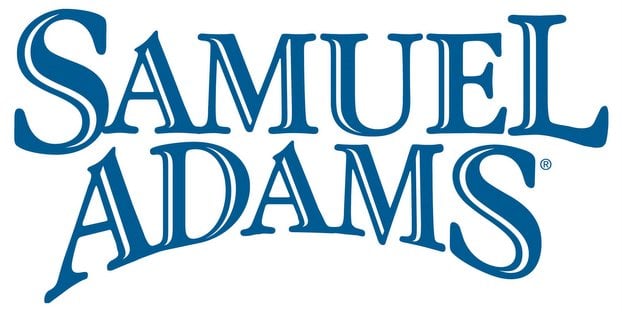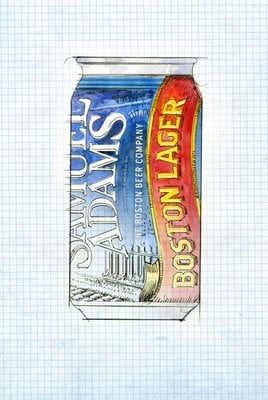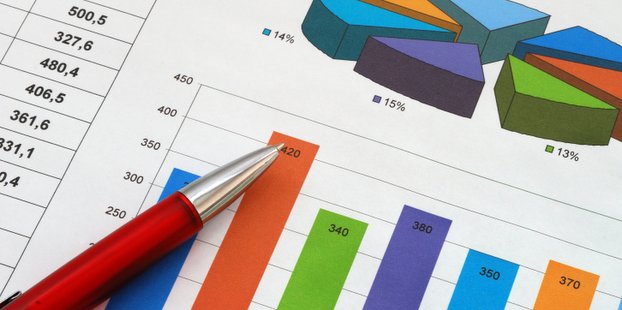
The Boston Beer Co. reported its fourth quarter and year-end earnings results, and while the overall beer sales in the country continue to trend down, the craft brewing industry, including its bell cow Sam Adams, continue to see increases in revenue and market share.
As always, there is a lot happening under the Boston Beer tent. In 2012, Boston Beer brewed and sold more than 50 distinct styles of Samuel Adams beers, including newcomers Samuel Adams Double Agent IPL and Samuel Adams White Lantern. Co-founder Jim Kotch worked with Jack McAuliffe, founder of New Albion Brewing Co., to re-release New Albion Ale for the first time in 30 years. And, not in 2012, but just before the earnings release, there was the huge news of the Sam Can — Samuel Adams’ first foray into the world of canned beer.
Let’s take a look at the data, followed by some commentary from the execs during the investors conference call:
Give us the goods
For the fourth quarter, net income did slightly decrease by $900,000 year over year to $16.9 million, but net revenue for the quarter was $153 million, a year-over-year increase of $10.9 million, or 8 percent. This increase is primarily due to core shipment volume gains, while the decrease in net income was primarily due to the favorable impact of a state income tax settlement in the 2011 fourth quarter.
Net revenue for full-year 2012 was $580.2 million, an increase of $67.2 million, or 13 percent, compared to 2011. The company experienced a gross margin of 54.3 percent for the fiscal 2012 full year.
Depletions grew 16 percent in Q4 compared to the prior-year period and 12 percent for the full year, compared to 2011. Similarly, shipments grew 9 percent in Q4 and 10 percent over the full year. For 2013, the company estimates depletion growth of between 10 percent and 15 percent.
According to Martin Roper, the company’s president and chief executive officer, depletions growth in the fourth quarter benefited from the strength in Samuel Adams Seasonal, Twisted Tea and Angry Orchard brands, offset by some slight decline in other Samuel Adams brand styles.
“The timing of our transition to our Samuel Adams Spring Seasonal was consistent with last year, as we accomplished a conversion from our Winter Seasonal to Alpine Spring by early January in most of our markets,” Roper said.
A snapshot of the early 2013 data showed that year-to-date depletions through the 6 weeks ended Feb. 9 are estimated to be up approximately 15 percent from the comparable period in 2012. The 2013 forecast for the full year has a depletions and shipments growth target of between 10 and 15 percent.
Advertising and additional ventures
As life philosopher Ric Flair famously said, to be the man, woo!, you have to beat the man, and the way to do that in the beer business is advertising and promotion. The advertising, promotional and selling expenses at Boston Beer increased by $12 million, or 8 percent, in 2012 when compared to 2011. This is primarily due to planned increased investments behind the company’s brands.
“We are prepared to forsake the lost earnings that may result from these investments in the short term as we pursue long term profitable growth,” Roper said.
Looking at 2013, the company targeted an increased advertising, promotional and selling expenses of between $18 million and $26 million.
Full year 2012 capital spending came in at $68.2 million, most of which relates to continued investments in the company’s breweries and additional keg purchases, and the company estimates an increase in that area in 2013 in the neighborhood of $70 to $85 million.
There is still much new business on the horizon for Boston Beer: Alchemy & Science, the company’s craft brew incubator completed its first year in 2012; Traveler Beer Co. rolled out in test markets with its Curious Traveler and Tenacious Traveler shandy-style beers; Angel City Brewery launched two new beers. The financial projections for 2013 estimate a $2 to $4 million investment in Alchemy & Science projects. There is no guarantee that 2013 volume of Alchemy & Science brands will fully cover these expenses and others that could be incurred.
Core shipment volume was approximately 729,000 barrels in Q4 2012, a 9 percent increase from the prior-year period. The fourth quarter and full-year shipments growth rates were lower than depletions growth rates primarily due to one additional week in the fiscal 2011 fourth quarter and the full year. For the full year, core shipment volume was approximately 2.7 million barrels, a 10 percent increase compared to 2011.
Conference call quotables from CEO Martin Roper
On consolidation among craft brewers
“Well, it’s hard to speculate on the future, but when you look at the patterns of the past there really hasn’t been very much. Everybody keeps looking for a rollup, and it doesn’t happen. I think for a bunch of reasons. One of them is this is a fun business to be in. It’s growing, so it’s very exciting, so you don’t have a lot of people who are willing sellers.
“Second, people want to protect the spirit of their own brewery and its brand. And that doesn’t lend itself to consolidation. And third, there are often negative synergies in the consolidation because the franchise laws, which for us a consolidator into incompatible footprints, that you have a certain wholesaler footprint, you buy somebody else, they’re in different wholesalers, franchise laws prevent in many cases you are putting them into a common wholesaler, so you have negative synergies because you are now competing with your primary wholesaler.”
On the impact of Black Crown and Third Shift
“Yeah I think it’s too early to tell. I do think that the introduction of brands between the lower price craft brands and sort of the domestic premium is going to be an interesting thing to watch as to whether it trades people down and is therefore bad for the retailers and the wholesalers, or whether it trades people up and is therefore good for the retailers and the wholesalers.
“Certainly, long-term, it’s beneficial to have sort of more entry-level craft beer styles for people to trade up, and I think long-term that will be good but what the short-term impacts on that is it’s way too early to tell.”
On using existing shelf space for innovations and growing incremental shelf space from there
“I think we recognized a while ago that we weren’t gaining our fair share of the additional shelf space. And we launched a number of innovation efforts and incremental SKUs [stock-keeping unit] at different price points and in different packages, such as our single-serve packages, to try and help us maintain presence on those shelves where we, perhaps, did not have presence.
“And, certainly, you’re seeing some of those efforts show up. I would note that it continues to be very competitive. There is a lot of new SKU proliferation throughout the category, not just from new breweries starting up, but basically from each brewery introducing new beers and trying to remain fresh with the drinker.”
On the growth of the core Sam Adams brand
“I think we’re obviously disappointed and that we’re not able to grow that at the rate of the craft category. Some of that is for some of the reasons discussed [by the shelf space answer] and competition for shelf space and some of the sort of natural dynamics of the environment that we’re living in right now. But naturally we are not happy and that continues to be our number one priority within the company. And the one that we have the best teams focused on and also from a prioritization point of view is the number one thing we try and work on at the sales execution end.
“We were happy last year that in a market where I think there were 400 new craft brewers Sam Adams did grow. We were able to grow Sam Adams despite this huge influx of many brewers.”

On the Sam Can and strategy therein
“The can is primarily for different occasions rather than a new consumer. It’s going to be the craft beer drinker, the Sam Adams drinker, but the can offers them the option of bringing our beer to a lot of places where bottles aren’t convenient. Beach, boat, golf, barbecues and then certain venues that won’t carry bottles, like airlines. They will only carry cans. So they are not the huge core of our occasions and many of our drinkers will bring bottles to some of those places. So it’s primarily a way of allowing our drinkers to take Sam Adams into those handful of occasions where bottles weren’t convenient.
“There are often relatively upscale drinkers at a stadium or a concert, and those are craft beer drinkers, and they are expecting that you get a craft beer now. So we are getting pulled into those places without the massive marketing spend that it used to basically keep us out.
“We’ll be looking for incremental shelf space for the can. We would not anticipate very many retailers taking the bottles off the shelf and replacing it with the cans. So, our anticipation is that bottles will continue to outsell cans as we have seen with other craft breweries will offer both.”
On the extra costs associated with the can
“I think you know we have lots of extra costs of the new can and filling it and ultimately the gross margin impact will be a function of both how large the opportunity is and how efficiently we can sell it. Our current guidance includes our current knowledge of all-known facts. And so then sort of backing out based on other experience we’d have the can package if it could run as efficiently as bottles, would probably have slightly better gross margins than bottles, but until we actually run it and know where we are and also what volume we’re getting and how efficient our can line runs or the can producer and all the other impacts it’s really hard to tell.”



Leave a Reply
You must be logged in to post a comment.